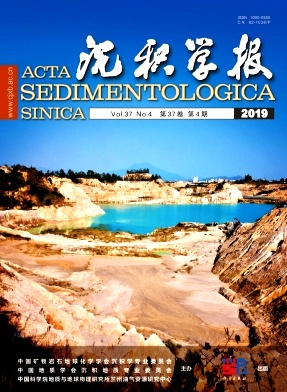Sedimentary Features and Genetic Mechanisms of the Foraminiferarich Sand Layers in the modern Baiyun Submarine Canyons, Northern South China Sea
doi: 10.14027/j.issn.1000-0550.2018.187
- Received Date: 2018-09-07
- Rev Recd Date: 2018-11-15
- Publish Date: 2019-08-10
-
Key words:
- Pearl River Mouth Basin /
- submarine canyon /
- piston core /
- sediment waves /
- internal waves /
- internal tides
Abstract: Two gravity piston core samples were taken for investigation from a typical Late Pleistocene-Holocene slope-confined canyon in the Baiyun Sag,Pearl River Mouth Basin. Sediment analyses from the core located at the canyon head revealed the presence of five sand layers containing particles of quartz,shell fragments,and abundant foraminifera. Sedimentary features (e.g., inverted ages and eroded base) showed that the sand in each layer was trans-ported by gravity currents,but other features also revealed the action of traction currents,evident from (1) cumula-tive frequency diagrams and C-M cross-plots,which showed that the coarse particles were transported by rolling; (2) well-sorted sand particles;and (3) top or basal lithological contacts and bidirectional cross-bedding within some in-tervals. These sedimentary features,considered together,indicate that the sediments were deposited at the canyon head by gravity current,which itself was possibly modified by active bottom currents in the northern South China Sea. The sediment waves recognized in the canyon,together with in-situ mooring observations,have raised the postulation that the bottom current was caused by the interplay of complex canyon morphology and internal waves and tides, which would have also led to the observed cyclic variation of cross-bedding thickness and the exceptional abundance of planktonic foraminifera. These conclusions increase the knowledge of possible mechanisms of sand sedimentation within the canyon,and have important implications for the prediction of deepwater reservoirs for both hydrocarbons and natural gas hydrate.
| Citation: | GAO ShengMei, ZHUO HaiTeng, WANG YingMin, WANG XingXing, JIA KaiYu, ZHOU Wei. Sedimentary Features and Genetic Mechanisms of the Foraminiferarich Sand Layers in the modern Baiyun Submarine Canyons, Northern South China Sea[J]. Acta Sedimentologica Sinica, 2019, 37(4): 798-811. doi: 10.14027/j.issn.1000-0550.2018.187 |






 DownLoad:
DownLoad: